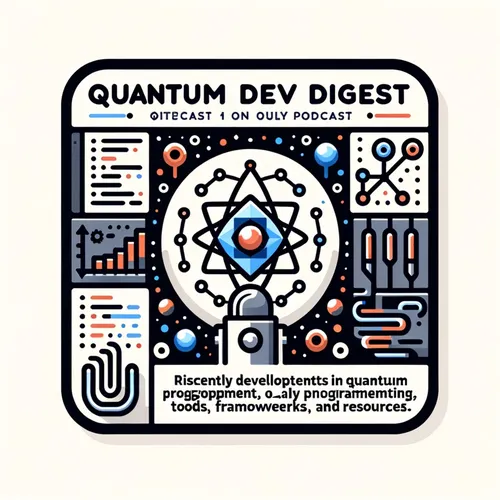Quantum Leap: Room Temperature Nanosphere Record Shatters Barriers
- Author
- Quiet. Please
- Published
- Fri 08 Aug 2025
- Episode Link
- https://www.spreaker.com/episode/quantum-leap-room-temperature-nanosphere-record-shatters-barriers--67302055
This is your Quantum Dev Digest podcast.
Picture this: I’m standing inside a humming quantum lab, clouded with cold mist and the faint, ionized gold of cryostat light. The world outside is sweltering in a summer heat wave, but here, I watch history unfold at room temperature—a day I never thought I’d see as a quantum physicist. I’m Leo, your Learning Enhanced Operator, and this is Quantum Dev Digest.
Let’s skip preamble and drop right into the pulse of today’s quantum news: A team from ETH Zurich just demonstrated something wildly unexpected—a quantum “purity” record with a massive nanosphere cluster, and all at *room temperature*. No heavy-duty cryogenics, no energy-intensive cooling—just the raw, astonishing power of quantum mechanics working in everyday conditions. To most folks, a nanosphere is still minuscule, but this one comprises hundreds of millions of atoms, making it “enormous” in our quantum world.
Why does this matter? Picture quantum tech as a classic ice cream truck—except until now, it only functioned in the Arctic. If you brought it to Miami, the whole enterprise melted away. Quantum computers and sensors have needed deep freeze conditions, locked away in expensive, specialized labs. But suddenly, researchers drove that quantum truck straight into the sunshine, and it runs *perfectly*. ETH Zurich’s group not only disabled nearly all sources of classical “noise”—the stuff that usually drowns out fragile quantum states—but they did so with over 90% of the particle’s motion traced to pure quantum effects.
Let’s analogize: Think about building a sandcastle at the beach. Ordinarily, the wind, waves, and passersby are your enemies. You need perfect calm—or your creation collapses. The ETH Zurich team figured out a way to build a castle that stands firm, even mid-tide and blowing wind. Room temperature operation isn’t just a technical convenience—it opens a path to scalable, affordable, deployable quantum devices in hospitals, cars, or smartphones.
This week’s surge of breakthroughs echoes further. Over at CERN, researchers have kept an antiproton—an actual antimatter particle—coherently “spinning” in a quantum state for almost a minute. Not only does this deepen our understanding of the universe’s matter–antimatter imbalance, but it also reinforces the sense that quantum boundaries are shifting, fast.
Meanwhile, industry’s evolving in lockstep. IQM launched their 54-qubit “Emerald” system, tripling past qubit counts without compromising reliability. In fields like cancer therapy modeling and fluid simulation, Emerald’s power isn’t abstract; it’s outperforming classical approaches in real molecular and engineering benchmarks.
As a quantum specialist, I marvel at how quickly we’re closing the gap between theoretical quantum promise and real-world quantum power. It’s like watching an orchestra rehearse in fragments for years—then, in a brilliant summer, finally finding perfect harmony with the lights on.
Thank you for tuning in to Quantum Dev Digest. If you have questions or want a topic discussed on air, send me a note at [email protected]. Please subscribe if you enjoyed today’s dive—this has been a Quiet Please Production, and for more information, visit quiet please dot AI.
For more http://www.quietplease.ai
Get the best deals https://amzn.to/3ODvOta
